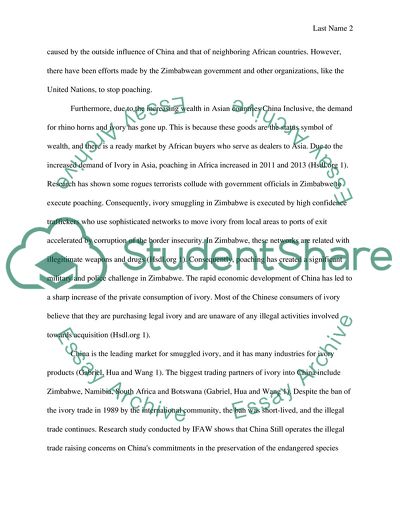Cite this document
(The Problem of Poaching in Zimbabwe Essay Example | Topics and Well Written Essays - 2250 words, n.d.)
The Problem of Poaching in Zimbabwe Essay Example | Topics and Well Written Essays - 2250 words. https://studentshare.org/environmental-studies/1665250-poaching-in-zimbabwea-causes-and-attempts-to-stop-sense-the-1990s
The Problem of Poaching in Zimbabwe Essay Example | Topics and Well Written Essays - 2250 words. https://studentshare.org/environmental-studies/1665250-poaching-in-zimbabwea-causes-and-attempts-to-stop-sense-the-1990s
(The Problem of Poaching in Zimbabwe Essay Example | Topics and Well Written Essays - 2250 Words)
The Problem of Poaching in Zimbabwe Essay Example | Topics and Well Written Essays - 2250 Words. https://studentshare.org/environmental-studies/1665250-poaching-in-zimbabwea-causes-and-attempts-to-stop-sense-the-1990s.
The Problem of Poaching in Zimbabwe Essay Example | Topics and Well Written Essays - 2250 Words. https://studentshare.org/environmental-studies/1665250-poaching-in-zimbabwea-causes-and-attempts-to-stop-sense-the-1990s.
“The Problem of Poaching in Zimbabwe Essay Example | Topics and Well Written Essays - 2250 Words”. https://studentshare.org/environmental-studies/1665250-poaching-in-zimbabwea-causes-and-attempts-to-stop-sense-the-1990s.


